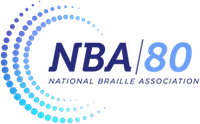Graphic boxes vs Visible space for ELMP
Home › Forums › Unified English Braille Technical › Graphic boxes vs Visible space for ELMP
- This topic has 3 replies, 2 voices, and was last updated 4 months, 2 weeks ago by
kdejute.
-
AuthorPosts
-
July 23, 2025 at 11:54 am #44053
Tiffanie Dumont
ParticipantI am wondering if a graphic box or visible space is best to be used in the examples attached. This is a 1st grade workbook (not textbook), expendable project and rule 10.1.1 h-i does not specifically include these scenarios since it is a linear math equation. If a graphic box is to be used, what size and spacing is best?
Attachments:
You must be logged in to view attached files.July 25, 2025 at 9:50 am #44062kdejute
ModeratorTiffanie,
Thank you for your question!
You are quite right that a good place to start is "Guideline 10: Expendable (Consumable) Material" of the BANA Guidelines for the Transcription of Early Educational Materials from Print to Braille.
As you know, 10.1.1.h of those guidelines says,
Omit lines, dashes, circles, boxes, etc., indicating a required answer, before or after questions. (Braille Formats 2016, Section 10.5.1)
Notably, 10.1.1.f says,
Leave enough blank space, or lines, for the insertion of the answer with braille writer or slate and stylus. It takes skill to line up a braille writer to insert an answer. Extra blank space is needed.
I suspect that in the examples you shared, the student will not be expected to write in any answers on page 69 but *will* be expected to write in answers on page 63 (which includes larger text and boxes indicating missing material and also says, "Find the number that makes each equation true.").
Hmmm.
One more place to look for guidance is the Math Examples at the end of the BANA Guidelines for the Transcription of Early Educational Materials from Print to Braille. On print page 52 of those guidelines, the commentary to the UEB Math/Science Math Example 3 says,
The visible space symbol (+) representing a space to be filled in is used in textbooks. (UEB Guidelines for Technical Material, 2014, 3.6) However, for worksheets or homework sheets intended for a specific student it may be beneficial to draw squares to identify the missing number as shown on the following page.
July 25, 2025 at 9:54 am #44063kdejute
ModeratorOne possible solution is to use small drawn squares on page 69 and large drawn squares (with the same line texture) on page 63.
A rough rule of thumb for how big to make the squares that an answer is to be written in might be two cells wider than the correct answer will be and one cell taller than a braille cell (i.e., draw the top box line half a braille cell above where the answer will be written, and draw the bottom box line half a braille cell below where the answer will be written).
Let me see if I can get some input from a "boots on the ground" teacher about this, too.
–Kyle
July 28, 2025 at 3:39 pm #44071kdejute
ModeratorA little discussion with a teacher brings up how *very* difficult it is to align a slate and stylus or a braille writer with specific blank space, even on a consumable worksheet.
So, we would likely use a visible space for all blanks to be filled in and write a tn explaining the situation, probably including a suggestion to write answers on a separate piece of paper. -
AuthorPosts
Everyone is free to read the forums, but only current NBA members can post. Become a member today. Click here to Login and return.
